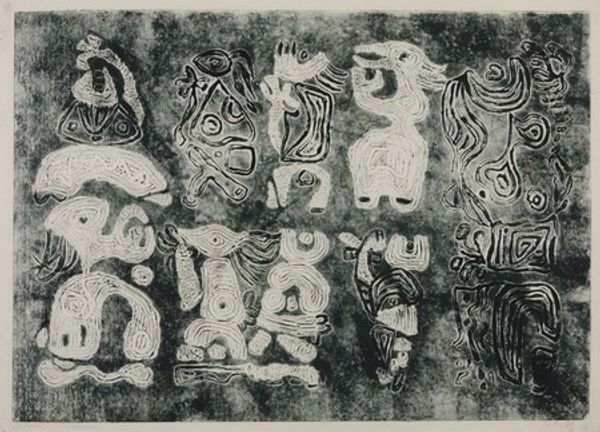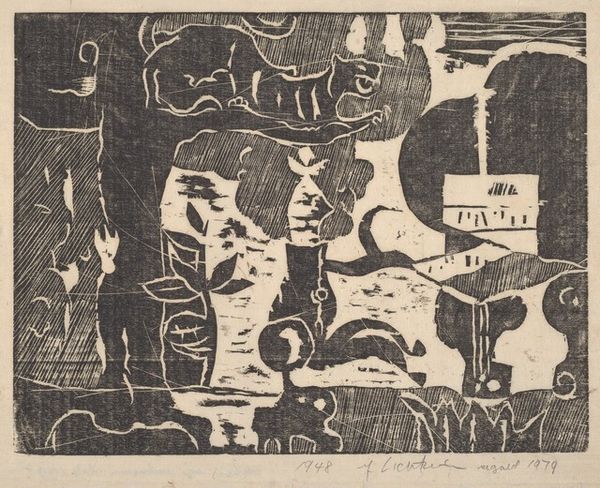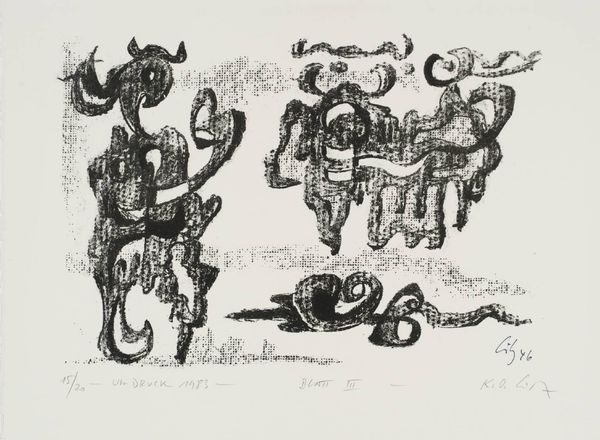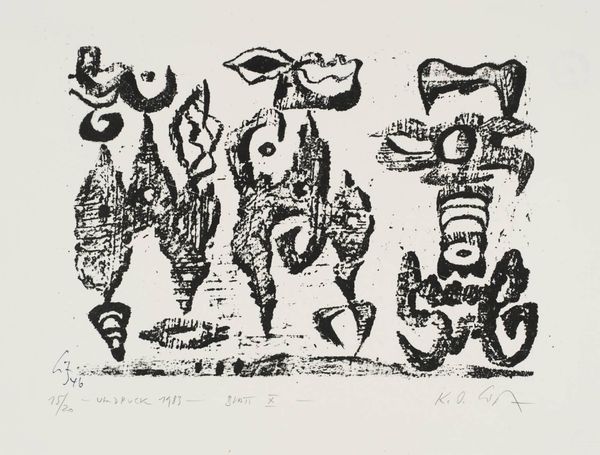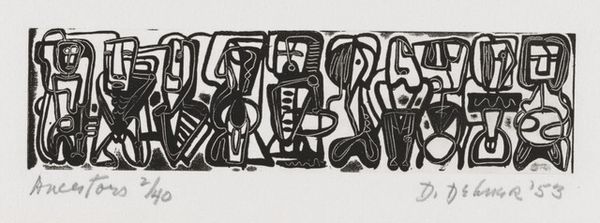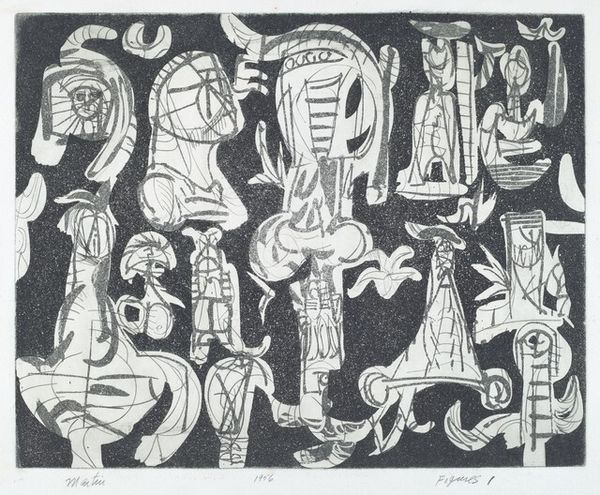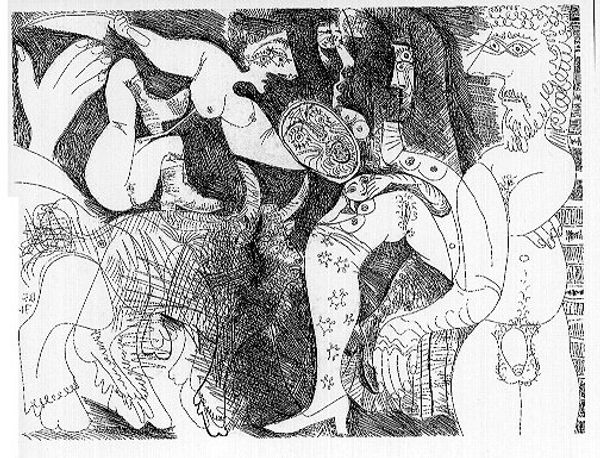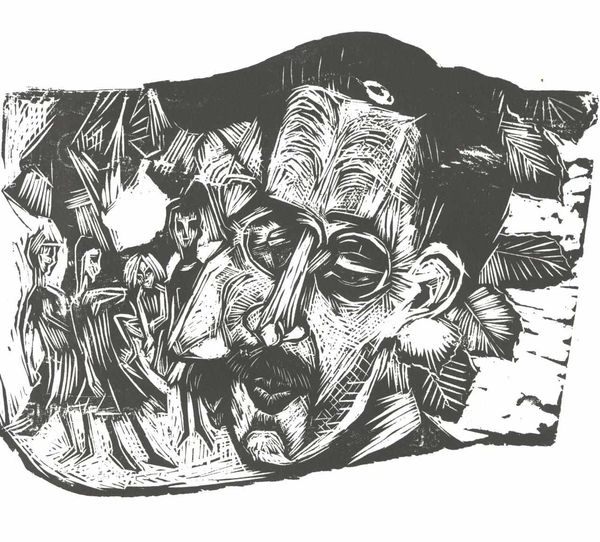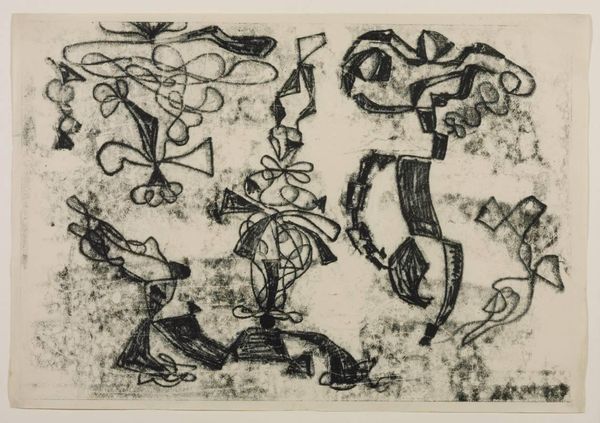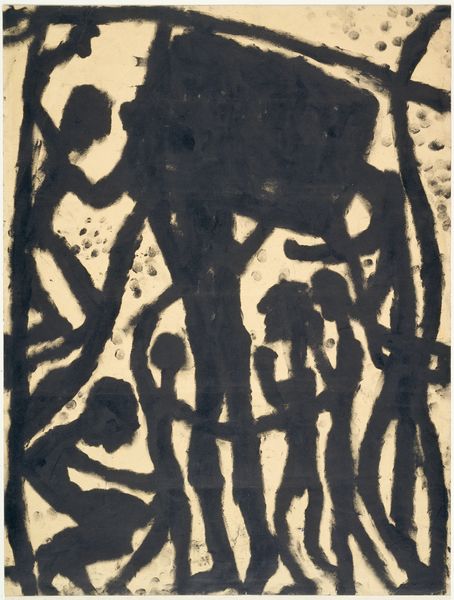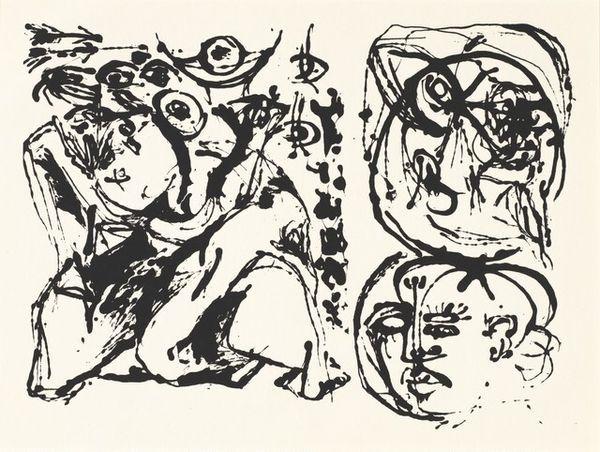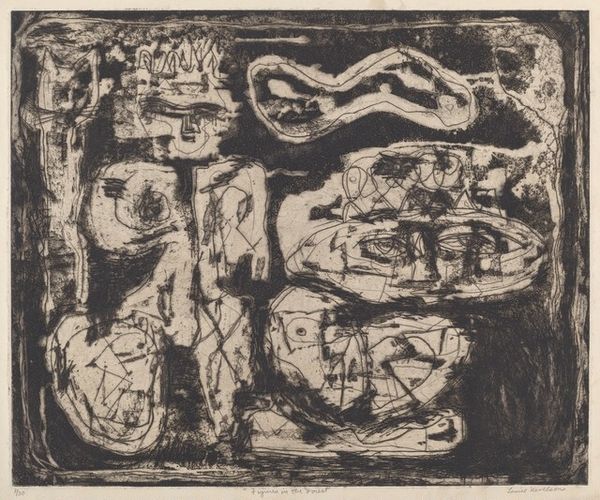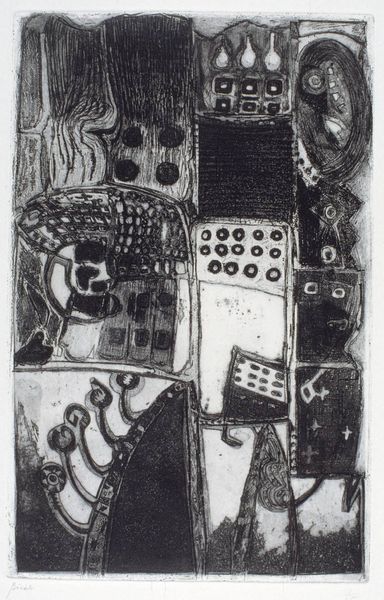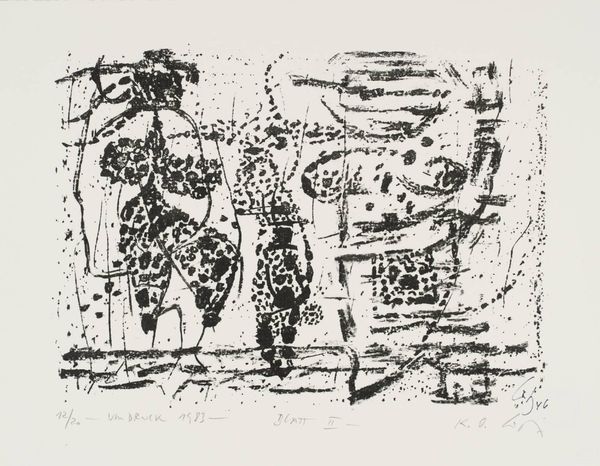
Dimensions: image: 400 x 560 mm
Copyright: © Karl-Otto Götz | CC-BY-NC-ND 4.0 DEED, Photo: Tate
Curator: Professor Karl-Otto Götz created this evocative piece, "Gilgamesh." Editor: My first thought? These biomorphic forms, reminiscent of cave paintings, feel ancient, primordial. Curator: Götz was a key figure in postwar German abstraction. His work often explores the subconscious, the primal, in reaction to the horrors of war. Editor: The composition is quite compelling. The arrangement of these glyph-like figures creates a strong sense of rhythm and visual balance. Curator: He’s tapping into that ancient narrative, the epic quest for immortality. It reflects the human yearning to transcend our limitations. Editor: The stark monochrome palette enhances the feeling of antiquity, wouldn't you agree? I also notice the contrast in textures. Curator: It reminds us that even the most abstract forms can carry profound cultural weight. Editor: Indeed. It's a fascinating collision of the archaic and the modern.
Comments
Join the conversation
Join millions of artists and users on Artera today and experience the ultimate creative platform.
tate 8 months ago
⋮
The Babylonian epic of Gilgamesh, which relates the exploits of a mythical hero, was inscribed on clay tablets dating from around 2,000 BC. Götz may have been drawn to this ancient myth as a source of archetypal imagery that pre-dates the tradition of western rationalism. In preparing the print, Götz used gloss paint to build up the outlines of the figures on the etching plate. When printing the sheet by hand, he pressed the ink between the ridges caused by these raised outlines Gallery label, September 2004
